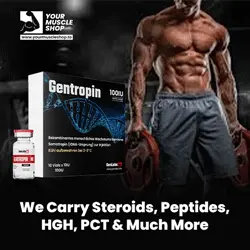DefMetalLifter
MuscleChemistry Registered Member
Arnold Schwarzenegger´s Diet Facts
<figure class="entry-image" style="margin: 2.625px 0px 15.8125px; padding: 0px; line-height: 0; color: rgb(115, 115, 115); font-family: Lato, 'Helvetica Neue', Helvetica, Arial, sans-serif;">
 </figure>what did arnold eat to get that huge? Let’s take a quick glance back in time.
</figure>what did arnold eat to get that huge? Let’s take a quick glance back in time.
Protein:
When I was a kid, my cousin, Chris, a bodybuilder, taught me about eating a lot of protein. “Arnold says you need a gram per each pound of body weight,” he said on our way to an all-you-can-eat fish buffet. In fact, Arnold recommended .5 g/lb. per day for “average” people and 1 g/lb. for athletes. Pretty consistent to what you’ll hear today.
Whole foods.
I lived in LA, so occasionally I’d get firsthand reports on Arnold. My friend Ray once got to have dinner with him. Hearing that he ate “a huge amount of beef” was no surprise, having been filled in by my cousin, but I did learn something new when Ray told me that he said that “bread was poison.” Arnold wasn’t anti-carb, except when cutting up for a competition. But he was pro whole foods, acknowledging that nature knew how to make foods more digestible than scientists did. What they knew was how to make foods change color. This simple, or rather archaic, rule to live by was an anathema to a society in the grips of the prepared food revolution. Arnold was having none of it.
Many meals a day.
“You see something, you eat it,” said another of my bodybuilding friends to someone who’d asked how he got that big. “You eat all the time.” Arnold knew three squares a day wasn’t going to cut it, no matter what the FDA was championing. And it wasn’t just the fact that he needed 5,000 calories per day to maintain his size. They knew about the importance of insulin spikes, digestion times, and other variables that could be helped by eating more frequently. Smaller meals allowed you to train harder. The harder you could train, the better the results, provided you had enough fuel in the tank.
Protein shakes.
Even my athletic friends thought I was weird for the concoctions I’d throw into a blender in high school. But the boys down at Gold’s Gym said the best way to get enough nutrients was to buy bulk protein and make shakes, so I immediately jumped on the bandwagon. These were often clumpy and none too tasty, a far cry from oh, say, Beachbody’s Whey Protein Powder shakes. We, however, did what Arnold did and would have happily quaffed down motor oil if someone had told us it would make us strong.
Fats.
Arnold didn’t shy away from fat, recommending good fats, like nuts, but also bad fats that you get from dairy and red meat, things he ate in abundance. But certainly these recommendations had to factor in his size and the amount of exercise he did. If you do this, his level of fat intake no longer seemed outrageous. More and more we are realizing the importance of fatty acids. And not just omega-3s. Even saturated fats, which can be deadly if consumed in excess, are essential for maximal testosterone production and not something you want to cut out entirely.
13
<figure class="entry-image" style="margin: 2.625px 0px 15.8125px; padding: 0px; line-height: 0; color: rgb(115, 115, 115); font-family: Lato, 'Helvetica Neue', Helvetica, Arial, sans-serif;">

Protein:
When I was a kid, my cousin, Chris, a bodybuilder, taught me about eating a lot of protein. “Arnold says you need a gram per each pound of body weight,” he said on our way to an all-you-can-eat fish buffet. In fact, Arnold recommended .5 g/lb. per day for “average” people and 1 g/lb. for athletes. Pretty consistent to what you’ll hear today.
Whole foods.
I lived in LA, so occasionally I’d get firsthand reports on Arnold. My friend Ray once got to have dinner with him. Hearing that he ate “a huge amount of beef” was no surprise, having been filled in by my cousin, but I did learn something new when Ray told me that he said that “bread was poison.” Arnold wasn’t anti-carb, except when cutting up for a competition. But he was pro whole foods, acknowledging that nature knew how to make foods more digestible than scientists did. What they knew was how to make foods change color. This simple, or rather archaic, rule to live by was an anathema to a society in the grips of the prepared food revolution. Arnold was having none of it.
Many meals a day.
“You see something, you eat it,” said another of my bodybuilding friends to someone who’d asked how he got that big. “You eat all the time.” Arnold knew three squares a day wasn’t going to cut it, no matter what the FDA was championing. And it wasn’t just the fact that he needed 5,000 calories per day to maintain his size. They knew about the importance of insulin spikes, digestion times, and other variables that could be helped by eating more frequently. Smaller meals allowed you to train harder. The harder you could train, the better the results, provided you had enough fuel in the tank.
Protein shakes.
Even my athletic friends thought I was weird for the concoctions I’d throw into a blender in high school. But the boys down at Gold’s Gym said the best way to get enough nutrients was to buy bulk protein and make shakes, so I immediately jumped on the bandwagon. These were often clumpy and none too tasty, a far cry from oh, say, Beachbody’s Whey Protein Powder shakes. We, however, did what Arnold did and would have happily quaffed down motor oil if someone had told us it would make us strong.
Fats.
Arnold didn’t shy away from fat, recommending good fats, like nuts, but also bad fats that you get from dairy and red meat, things he ate in abundance. But certainly these recommendations had to factor in his size and the amount of exercise he did. If you do this, his level of fat intake no longer seemed outrageous. More and more we are realizing the importance of fatty acids. And not just omega-3s. Even saturated fats, which can be deadly if consumed in excess, are essential for maximal testosterone production and not something you want to cut out entirely.










